




It starts by hunting and gathering….
Which I do all for most of the year. In the spring I collect Bracken fronds, gorse and comfrey which is also known as knit bone. Nettles I collect when I need them and they dye an array of colours from wonderful browns to greens. In August I pick Bog myrtle and heather, both dye beautiful yellows and the smell they produce is intoxicating.





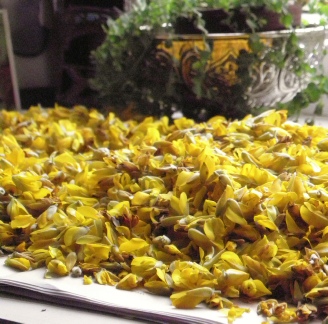
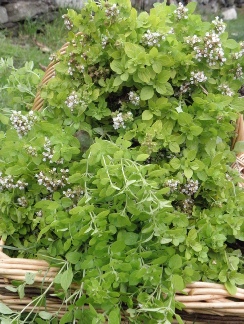
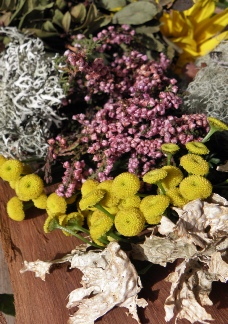
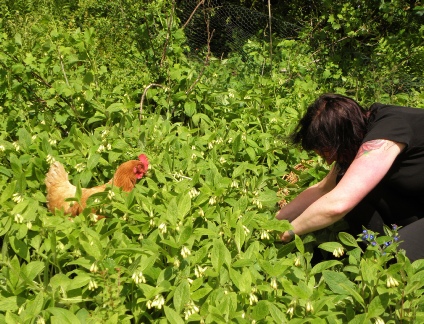
It starts by hunting and gathering.
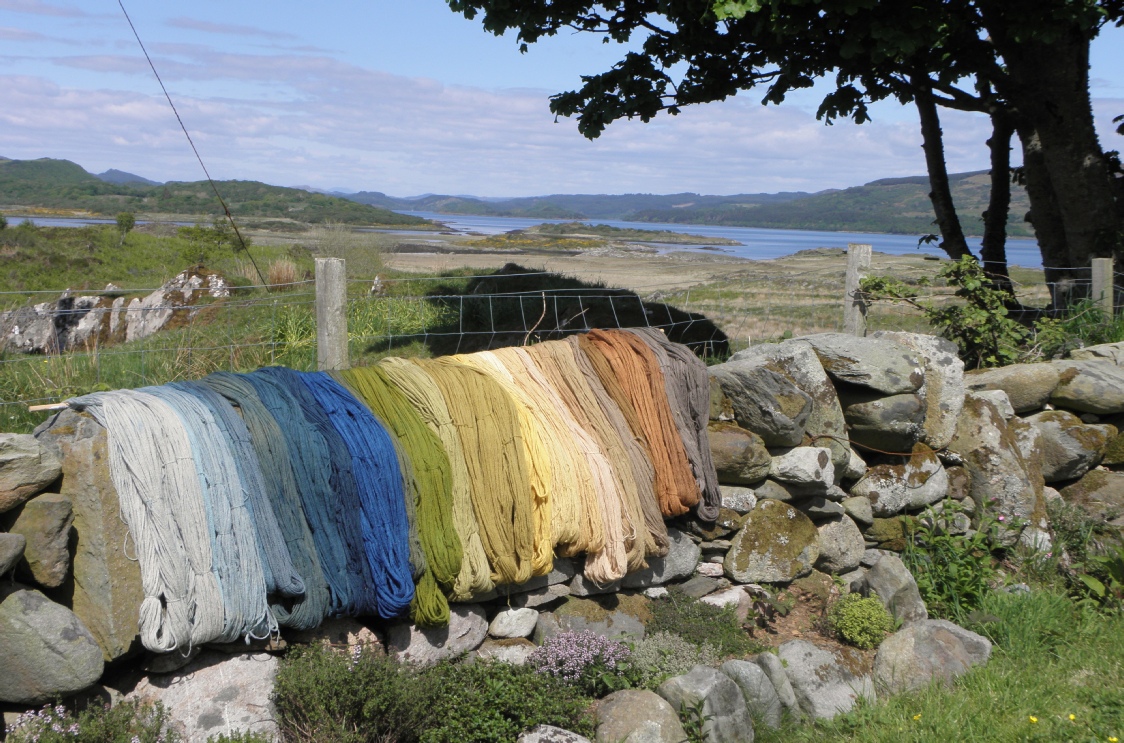

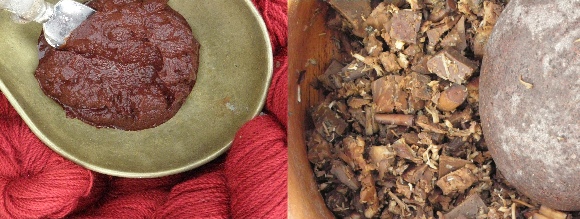
Gunnera root
Madder paste


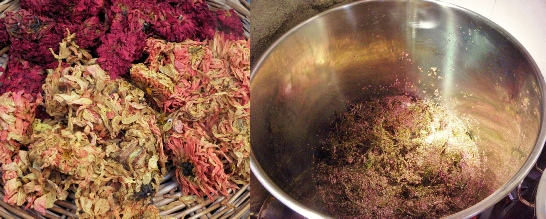
Dahlia
Heather
Artichoke
Bog myrtle
Bracken
Chamomile
Cochineal
Comfrey
Dahlia
Dock root
Dock seeds

Iris leaf
Iris root
Iris seed
Lichen
Logwood
Madder
Meadow sweet
Marjoram
Eucalyptus
Gorse
Gunnera leaf
Gunnera root
Heather
Henna
Horsetail
Indigo
Nettle
Oak bark
Purple loose strife
Reed
Rhubarb leaf
Sage
St John’s wort
Tansy
Thistle
Dying the wool is a very lengthy process. The wool I use is Blue faced Leicester and very soft, perfect for shawls and scarves. I also use worsted wool which is tough and great for those projects that see more wear. The wool hanks are washed to rid them of any lanolin, the natural grease on the wool. The hanks then need to be simmered in a mordent which is a metallic compound which is either alum, iron or copper to make the dye stick.
The dye is extracted by boiling the dried or fresh plant for an hour or so. In some cases such as gunnera root or iris root the process can take days to extract a deep colour and the roots need to be pounded and soaked first. The mordented wool is then added to the dye vat, steeped for an hour and left to cool over night. The results are always exciting and some of them are shown below.

Argyll
01546 870 317

